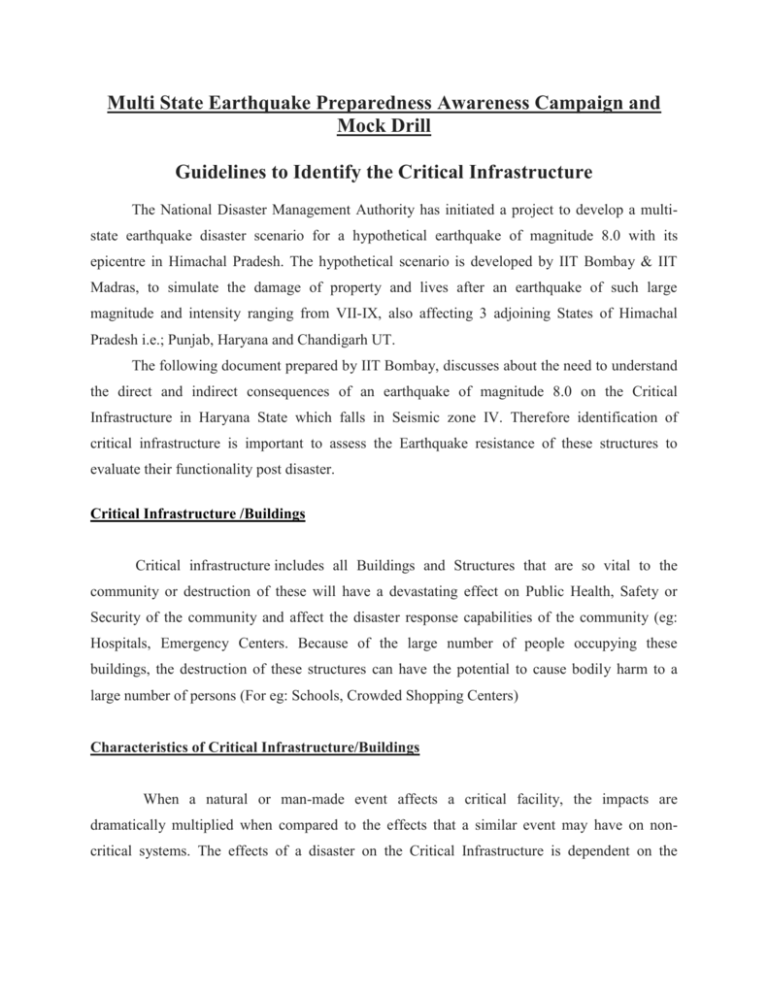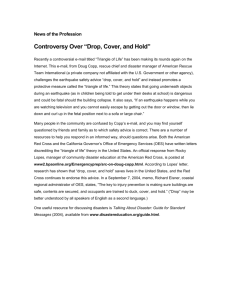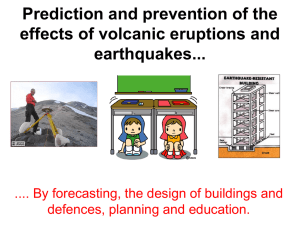guidelines to identify critical infrastructure and data collection form
advertisement

Multi State Earthquake Preparedness Awareness Campaign and Mock Drill Guidelines to Identify the Critical Infrastructure The National Disaster Management Authority has initiated a project to develop a multistate earthquake disaster scenario for a hypothetical earthquake of magnitude 8.0 with its epicentre in Himachal Pradesh. The hypothetical scenario is developed by IIT Bombay & IIT Madras, to simulate the damage of property and lives after an earthquake of such large magnitude and intensity ranging from VII-IX, also affecting 3 adjoining States of Himachal Pradesh i.e.; Punjab, Haryana and Chandigarh UT. The following document prepared by IIT Bombay, discusses about the need to understand the direct and indirect consequences of an earthquake of magnitude 8.0 on the Critical Infrastructure in Haryana State which falls in Seismic zone IV. Therefore identification of critical infrastructure is important to assess the Earthquake resistance of these structures to evaluate their functionality post disaster. Critical Infrastructure /Buildings Critical infrastructure includes all Buildings and Structures that are so vital to the community or destruction of these will have a devastating effect on Public Health, Safety or Security of the community and affect the disaster response capabilities of the community (eg: Hospitals, Emergency Centers. Because of the large number of people occupying these buildings, the destruction of these structures can have the potential to cause bodily harm to a large number of persons (For eg: Schools, Crowded Shopping Centers) Characteristics of Critical Infrastructure/Buildings When a natural or man-made event affects a critical facility, the impacts are dramatically multiplied when compared to the effects that a similar event may have on noncritical systems. The effects of a disaster on the Critical Infrastructure is dependent on the characteristics of the structures (location, design, materials used, and maintenance) and characteristics of the occupants (density, freedom of movement, and health during the event). Criteria to identify Critical Infrastructure/Buildings A building should be selected if it meets one or more of the following criteria: 1. Functional as a Lifeline A building is said to have lifeline functionality if it is within an organization controlling lifelines such as a telecommunication control room, railway control room, etc. For example building controlling Public Safety and Security such as Civil Defense Installation, Communication Centers, Emergency Operation Centers, Fire Stations, Hospitals and other medical facilities, Mass emergency Shelters, Police Stations and other such buildings for Public Security. 2. Post Disaster Functionality A building is said to have post disaster functionality if it provides a significant utility such as shelter immediately after a disaster. For example, major school buildings may be planned for use as relief shelter immediately after a disaster. Also functional utilities such as Communications-lines & stations, Electricity Supply, Fuel storage, Generators, Transmission lines, Petrochemical installations, Potable Water Supply, Waste water management are equally important to remain function post disaster. High Density Occupancy Structures such as Auditoriums, Theaters, Stadiums, Mosques/Temples, Educational facilities, Hotels and Office Buildings which can be turned in to relief shelters post disaster. 3. Demonstrative Value Building that has administrative importance such as a Deputy Commissioner’s residence has demonstrative value. The collapse of such buildings in an earthquake can weaken the confidence in public in the government’s ability to manage the situation. As Haryana government has owned this project, so let us work together and select the critical infrastructures following the format. Data Collection Form The draft layout of data collection form is for collecting the general information about the critical infrastructures which are also lifeline buildings of the region such as name, location and contact information to provide facilities like health services, communication, relief shelters & relief aid, water supply etc. District /Department: S. Building Number of No. Name Floors in the Building 1 2 3 4 5 6 7 8 9 10 Address Urban/ Person Telephone Approx.Number. of Rural in / Fax Persons in Building Charge Day time Night Time









